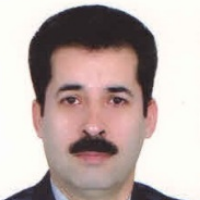Comparison of the effect of low-power laser with therapeutic ultrasound on the treatment of rotator cuff tendonitis
Author(s):
Abstract:
Background
Shoulder pain is the third most prevalent cause of musculoskeletal disorder after low back and cervical pains. Most of the shoulder symptoms are attributed to the rotator cuff. The objective of this study was to compare the effects of low-power laser therapy with ultrasound therapy on the patients with rotator cuff tendonitis. Materials And Methods
This clinical trial was performed in Zahedan university of medical sciences in 2006. Thirty patients with rotator cuff tendonitis were randomly assigned to either a low-power laser therapy group (15 patients) or an ultrasound therapy group (15 patients). Strength (kg) of shoulder abductor, and internal and external rotator muscles, as well as range (degree) of shoulder abduction, and internal and external rotation were measured before and after intervention using hand-held dynamometer and goniometer respectively. The pain was evaluated using the visual analogue scale. In the laser group, a low-level Ga-As laser was applied with a 100 mw point probe (average power), wave length of 905 nm, pulse duration of 200 ns, 6 J/cm2 dosage, 5 KHz frequency, and lasting 3 minutes. The ultrasound treatment was applied with a power of 1 W/cm2, a frequency of 1 MHz, pulse mode of 1:4, and lasting 10 minutes on each occasion. The treatment was carried out 3 times weekly for 10 days. The data were analyzed using independent sample t-test and paired t-test. Results
The pain in the laser group was significantly decreased from 6.06±1.6 to 5±1.3 in abduction, from 5.3±1.5 to 4.7±1.3 in internal rotation, and from 5.06±1.4 to 4.3±1.44 in external rotation (p<0.05). On the other hand, the pain in the ultrasound therapy group was decreased from 6.3±1.06 to 6.2±1.01 in abduction, from 6.07±0.9 to 5.9±0.84 in internal rotation, and from 5.87±0.92 to 5.8±0.96 in external rotation (p>0.05). A significant improvement after treatment was observed in the laser group in measures of shoulder abductor, internal rotator and external rotator muscles strength compared to those of the ultrasound therapy group (p<0.05). The pain level was also significantly decreased after the treatment in the laser group compared to the ultrasound therapy group in each of the three movements (p<0.05). Conclusion
In rotator cuff tendonitis, the results support the effectiveness of Gallium-arsenide low power laser therapy in order to decrease pain, and subsequently the occurrence of muscle strength. A period of low power laser therapy is more efficient than ultrasound therapy.Language:
Persian
Published:
Yafteh, Volume:10 Issue: 2, 2009
Page:
45
magiran.com/p577863
دانلود و مطالعه متن این مقاله با یکی از روشهای زیر امکان پذیر است:
اشتراک شخصی
با عضویت و پرداخت آنلاین حق اشتراک یکساله به مبلغ 1,390,000ريال میتوانید 70 عنوان مطلب دانلود کنید!
اشتراک سازمانی
به کتابخانه دانشگاه یا محل کار خود پیشنهاد کنید تا اشتراک سازمانی این پایگاه را برای دسترسی نامحدود همه کاربران به متن مطالب تهیه نمایند!
توجه!
- حق عضویت دریافتی صرف حمایت از نشریات عضو و نگهداری، تکمیل و توسعه مگیران میشود.
- پرداخت حق اشتراک و دانلود مقالات اجازه بازنشر آن در سایر رسانههای چاپی و دیجیتال را به کاربر نمیدهد.
دسترسی سراسری کاربران دانشگاه پیام نور!
اعضای هیئت علمی و دانشجویان دانشگاه پیام نور در سراسر کشور، در صورت ثبت نام با ایمیل دانشگاهی، تا پایان فروردین ماه 1403 به مقالات سایت دسترسی خواهند داشت!
In order to view content subscription is required
Personal subscription
Subscribe magiran.com for 70 € euros via PayPal and download 70 articles during a year.
Organization subscription
Please contact us to subscribe your university or library for unlimited access!


